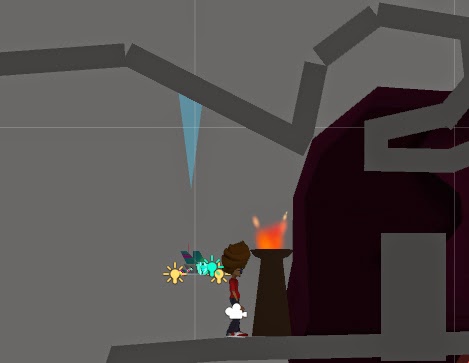Fire Level Elements
After blocking out the basic positions of the grey box export from unity in maya, The mesh was manipulated and shaped in order to further enhance the environmental features. Using a team mate's sketch puzzles were also blocked out. Minor changes regarding the position of vertexes occurred in order to best suit the final outcome seen below.
Only Volcano and Background pieces used for examples although methods applied to all meshes.
After blocking out the basic positions of the grey box export from unity in maya, The mesh was manipulated and shaped in order to further enhance the environmental features. Using a team mate's sketch puzzles were also blocked out. Minor changes regarding the position of vertexes occurred in order to best suit the final outcome seen below.
Only Volcano and Background pieces used for examples although methods applied to all meshes.
The Fire Level Environment is made up of various 3d meshes, Using the colour palet I applied colour to selected faces on the chosen objects.
Due to unitys light mapping system I was required to split the larger meshes into smaller pieces using 'detach component' in Maya.. The animation for the enviromental features that move was done in unity.
Here, the background pieces are shown and rendered, the render will be exported and applied to a plane.
Here are the final assets for the fire level, the same process has been applied to them and these are mantal ray renders. Objects like the rock door 1 & 2 and falling boulder will be coded in unity the others, just static visuals, platforms are also occasionally animated.


















































